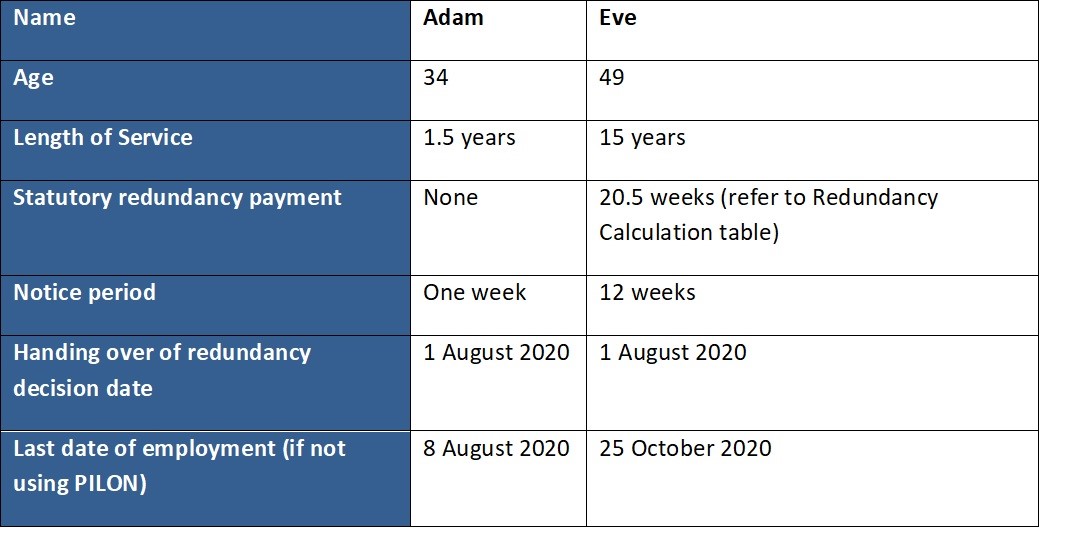If a Company Goes Bust Who Pays Redundancy? Lawful Insights for UK Worker
If a Company Goes Bust Who Pays Redundancy? Lawful Insights for UK Worker
Blog Article
Unboxing the Methods for Mitigating Firm Redundancy and Enhancing Organizational Resilience
Mitigating company redundancy and enhancing business resilience have ended up being focal factors for leaders making every effort to grow and adapt in an ever-evolving market. As we discover the complex strategies employed by forward-thinking companies, a deeper understanding arises right into the aggressive actions essential for fostering agility and stamina in the face of modification.
Assessing Current Organizational Redundancies
To efficiently assess existing business redundancies within a firm, a detailed review of the existing processes, obligations, and roles is essential. if a company goes bust who pays redundancy. By performing a complete assessment of the various features and jobs brought out within the organization, monitoring can recognize areas where duplication of initiatives or inefficiencies exist. This evaluation must not just concentrate on individual task duties but likewise consider exactly how various departments team up and connect
One approach to examining redundancies is to assess job descriptions and responsibilities to determine any overlaps or gaps in obligations. Furthermore, analyzing the process and communication channels can reveal bottlenecks or unnecessary action in processes. It is essential to include workers in all degrees throughout this analysis to get understandings from those straight associated with everyday procedures.

Applying Agile Workforce Techniques
Following a detailed evaluation of existing organizational redundancies, the application of agile labor force strategies becomes necessary for optimizing functional performance and adaptability. Dexterous workforce techniques entail creating a versatile and vibrant work atmosphere where staff members can quickly adapt to altering business needs. One essential element of applying agile workforce methods is fostering a culture of constant discovering and growth. This involves providing workers with the needed devices, sources, and training to get brand-new abilities and expertises. Additionally, organizations can enhance agility by promoting cross-functional teams that can quickly change and collaborate emphasis based upon top priority jobs.
One more essential component of active labor force techniques is advertising transparent interaction and empowering workers to make decisions autonomously within their functions. Overall, carrying out dexterous workforce methods can help firms remain competitive in today's quickly evolving company landscape.
Leveraging Modern Technology for Effectiveness
Leveraging sophisticated technical solutions can substantially boost operational effectiveness within organizations looking for to enhance and simplify processes source usage. By integrating automation devices, fabricated intelligence, and data analytics, firms can improve process, lower hand-operated mistakes, and make data-driven decisions quickly. Automation can take care of repeated tasks, enabling staff members to concentrate on more critical initiatives, thereby enhancing efficiency and innovation.
Additionally, the application of cloud computer services enables smooth collaboration among staff member, no matter of their physical place. check This fosters interaction, boosts project monitoring, and improves overall performance. In addition, making use of customer relationship monitoring (CRM) software can aid organizations much better comprehend their clients' requirements, personalize interactions, and inevitably raise client complete satisfaction and loyalty.

Urging Continuous Learning and Advancement
Applying a culture of constant understanding and development is important for cultivating growth and versatility within a vibrant organizational atmosphere. Urging staff members to participate in ongoing discovering possibilities not only improves their specific abilities but additionally adds to the total strength of the business. By focusing on continuous learning, organizations can stay abreast of industry patterns, adjust to technical improvements, and remain affordable in the marketplace.
To successfully urge continual discovering and advancement, business can develop understanding and development programs, offer chances for upskilling and reskilling, supply accessibility to on the internet programs and resources, and produce a helpful discovering setting. Supervisors play a critical role in advertising a culture of knowing by leading by example, offering feedback and coaching, and recognizing and rewarding staff members' discovering success.
Structure a Durable Corporate Culture
Developing a resilient corporate society is vital for companies seeking to navigate obstacles and flourish in an ever-evolving service landscape. A durable corporate society is defined by flexibility, openness, open communication, and a solid feeling of purpose. To build such a society, leaders must focus on promoting trust among workers, encouraging cooperation, and promoting a development way of thinking. Transparent communication regarding organizational adjustments, difficulties, and successes is crucial in creating a society where workers really feel notified and valued. Additionally, supplying opportunities for expert development, identifying and awarding employees' payments, and promoting work-life balance are important elements of a resilient company culture.
Leaders play a significant function fit the society of a company. By leading by example, demonstrating durability despite adversity, and actively sustaining their teams, leaders can impart these worths throughout the organization. A resistant corporate culture not just helps companies withstand difficulties however likewise cultivates innovation, improves worker engagement, and inevitably adds to long-term business success.
Conclusion
In conclusion, the approaches for minimizing firm redundancy and boosting organizational resilience are vital for preserving competitiveness in today's vibrant organization environment. By assessing existing redundancies, applying active workforce techniques, leveraging modern technology, motivating continuous learning and growth, and developing a resilient company culture, companies can adapt to change, boost effectiveness, and foster innovation. These aggressive steps will certainly help firms navigate obstacles, lessen disruptions, and make certain long-lasting success in the ever-evolving marketplace.
Complying with a thorough evaluation of current business redundancies, the implementation of active web workforce methods comes to be important for maximizing operational effectiveness and adaptability - if a company goes bust who pays redundancy. Generally, implementing active labor force approaches can help firms stay competitive in you could check here today's swiftly evolving service landscape
A resistant corporate society not only assists companies endure obstacles but likewise cultivates development, improves staff member engagement, and eventually adds to lasting organizational success.

Report this page